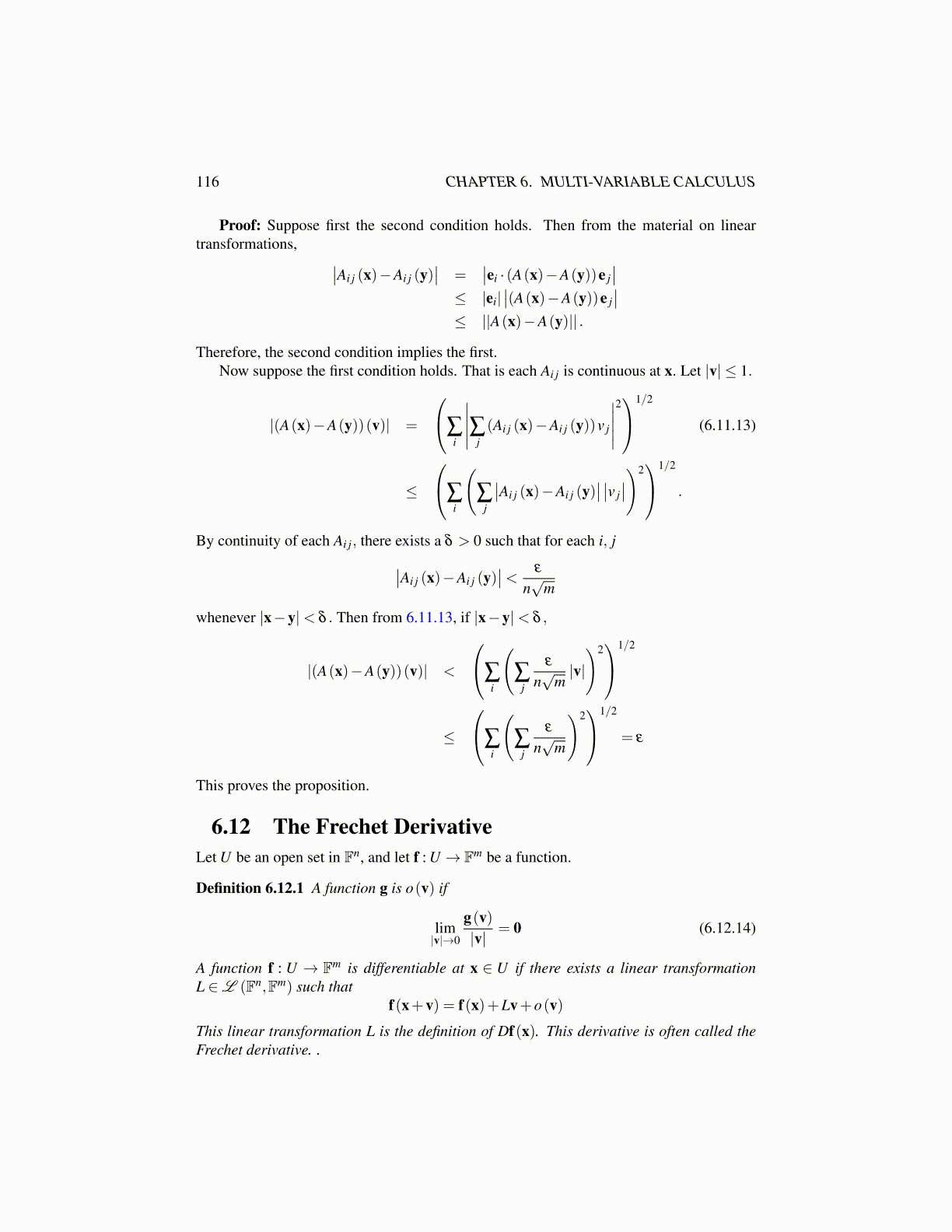
116 CHAPTER 6. MULTI-VARIABLE CALCULUS
Proof: Suppose first the second condition holds. Then from the material on lineartransformations, ∣∣Ai j (x)−Ai j (y)
∣∣ =∣∣ei · (A(x)−A(y))e j
∣∣≤ |ei|
∣∣(A(x)−A(y))e j∣∣
≤ ||A(x)−A(y)|| .
Therefore, the second condition implies the first.Now suppose the first condition holds. That is each Ai j is continuous at x. Let |v| ≤ 1.
|(A(x)−A(y))(v)| =
∑i
∣∣∣∣∣∑j(Ai j (x)−Ai j (y))v j
∣∣∣∣∣21/2
(6.11.13)
≤
∑i
(∑
j
∣∣Ai j (x)−Ai j (y)∣∣ ∣∣v j
∣∣)21/2
.
By continuity of each Ai j, there exists a δ > 0 such that for each i, j∣∣Ai j (x)−Ai j (y)∣∣< ε
n√
m
whenever |x−y|< δ . Then from 6.11.13, if |x−y|< δ ,
|(A(x)−A(y))(v)| <
∑i
(∑
j
ε
n√
m|v|)21/2
≤
∑i
(∑
j
ε
n√
m
)21/2
= ε
This proves the proposition.
6.12 The Frechet DerivativeLet U be an open set in Fn, and let f : U → Fm be a function.
Definition 6.12.1 A function g is o(v) if
lim|v|→0
g(v)|v|
= 0 (6.12.14)
A function f : U → Fm is differentiable at x ∈ U if there exists a linear transformationL ∈L (Fn,Fm) such that
f(x+v) = f(x)+Lv+o(v)
This linear transformation L is the definition of Df(x). This derivative is often called theFrechet derivative. .